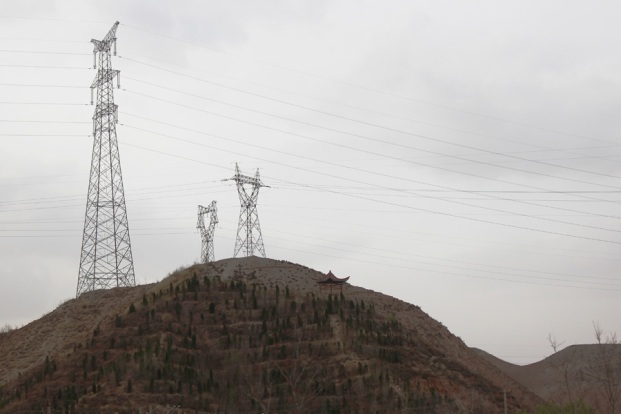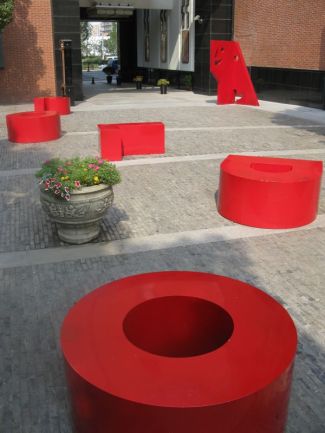Lanzhou / moving mountains (literally…almost)
17/07/2011 5 Comments
China can lay claim to all sorts of world’s-best titles … the biggest population, the fastest train service, the oldest panda (perhaps not a surprise) and the longest human domino (10,267 people in Inner Mongolia last year). It is also home to what is often deemed to be the world’s most polluted city, Lanzhou. It’s a place that (luck abounds!) I now have a project, so I have become a regular visitor over the last few months.
Located at the geographic centre of China, Lanzhou is an industrial city, housing hundreds of factories and processing facilities and power plants. Geographic conditions don’t help. The city has developed along the Yellow River, hemmed in by steep mountain ranges on either side of this major river. It lacks air flow. It also lacks rain, meaning that the mountainsides are mostly free of vegetation (resulting in regular dust storms) and that toxic air just tends to hang around. On many days, the air quality is poor that the mountains just adjacent the city cannot be seen through the haze.
The journey to the city from the airport (oddly enough for a smaller city, located 70 kilometres out of town) is pretty desolate. A new motorway weaves through the bare mountains, lined with massive power cables and outcrops of colourful advertising billboards.
Dotted through the mountainsides are hundreds of holes. According to our driver, these have been created by the shepherds who need to spend nights outside with their herds. I didn’t see any sheep or shepherds, but perhaps it was out of season.
Closer to the city, the mountains have undergone more significant modification. Their sides have been cut into terraces, creating a series of horizontal platforms on which vegetation has been planted.
But plants need water to grow, so millions of litres of water are being pumped to, and sprayed over, the mountain sides. It’s a huge, not to mention environmentally frightening, undertaking.
But, I guess it is an improvement on the previous solution being supported by the Lanzhou authorities – to demolish a number of mountains next to the city. Just like opening some windows to allow the breeze in, they said. This idea was tested, yet failed. Now the focus is on reafforestation, as well as programs to reduce air use, use cleaner energy and relocate polluting industries.
Some of the hillsides are getting greener.
Flying out the city, you can clearly see how the river system defines the areas that can support vegetation, and by extension, agriculture. You can also see the enormity of the re-vegetation program being undertaken … and the probable futility of trying to change something that cannot be changed.






























































































RECENT COMMENTS …